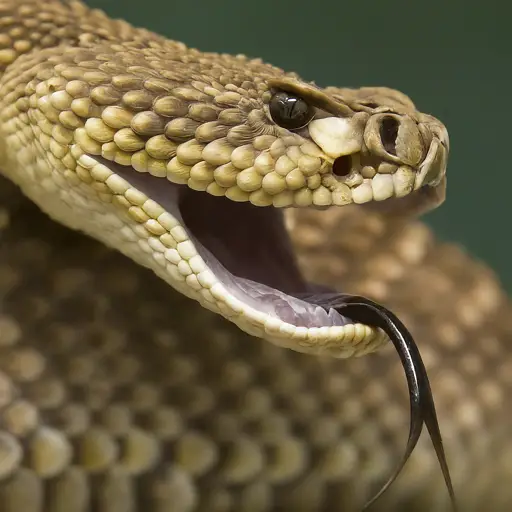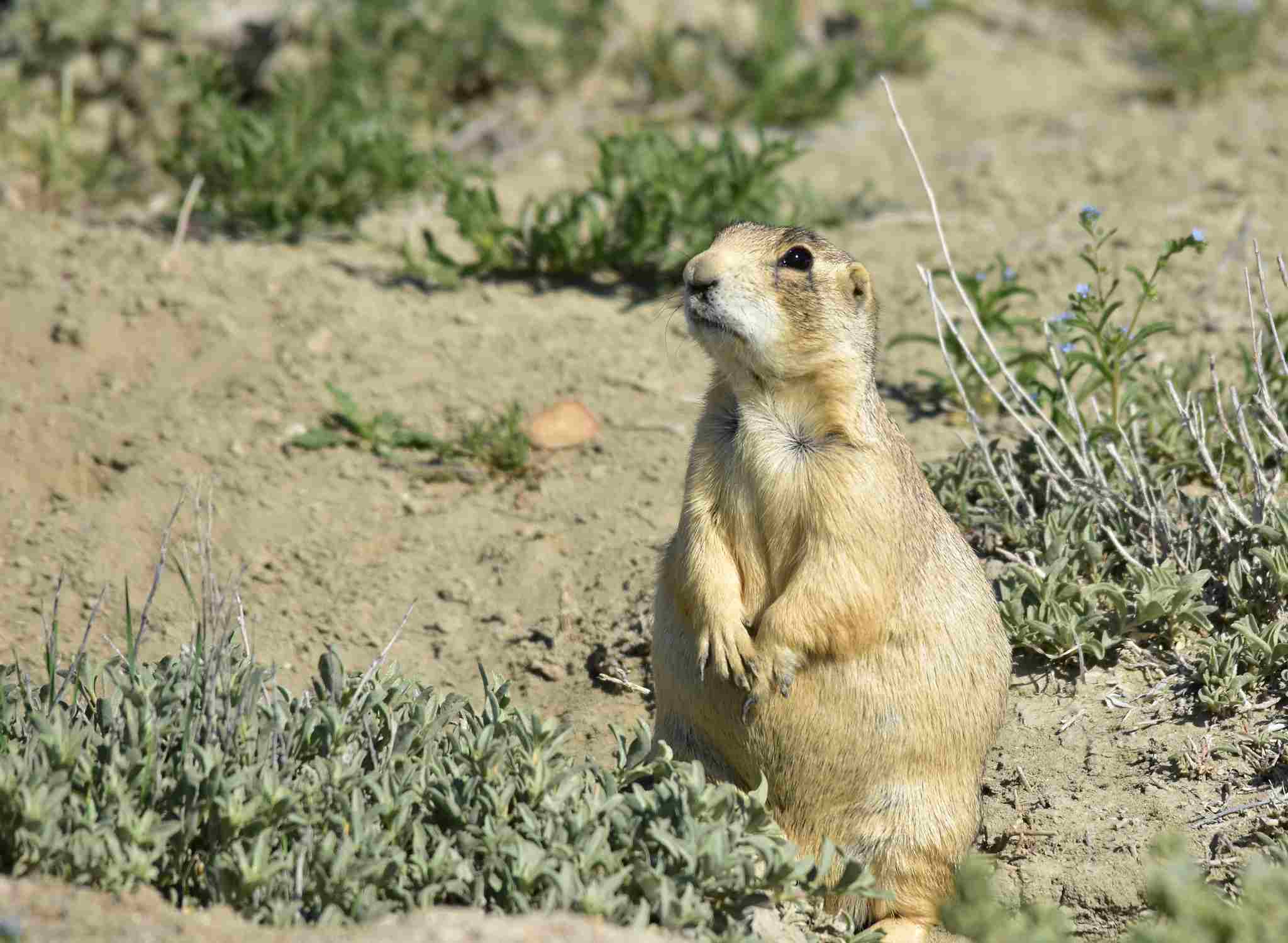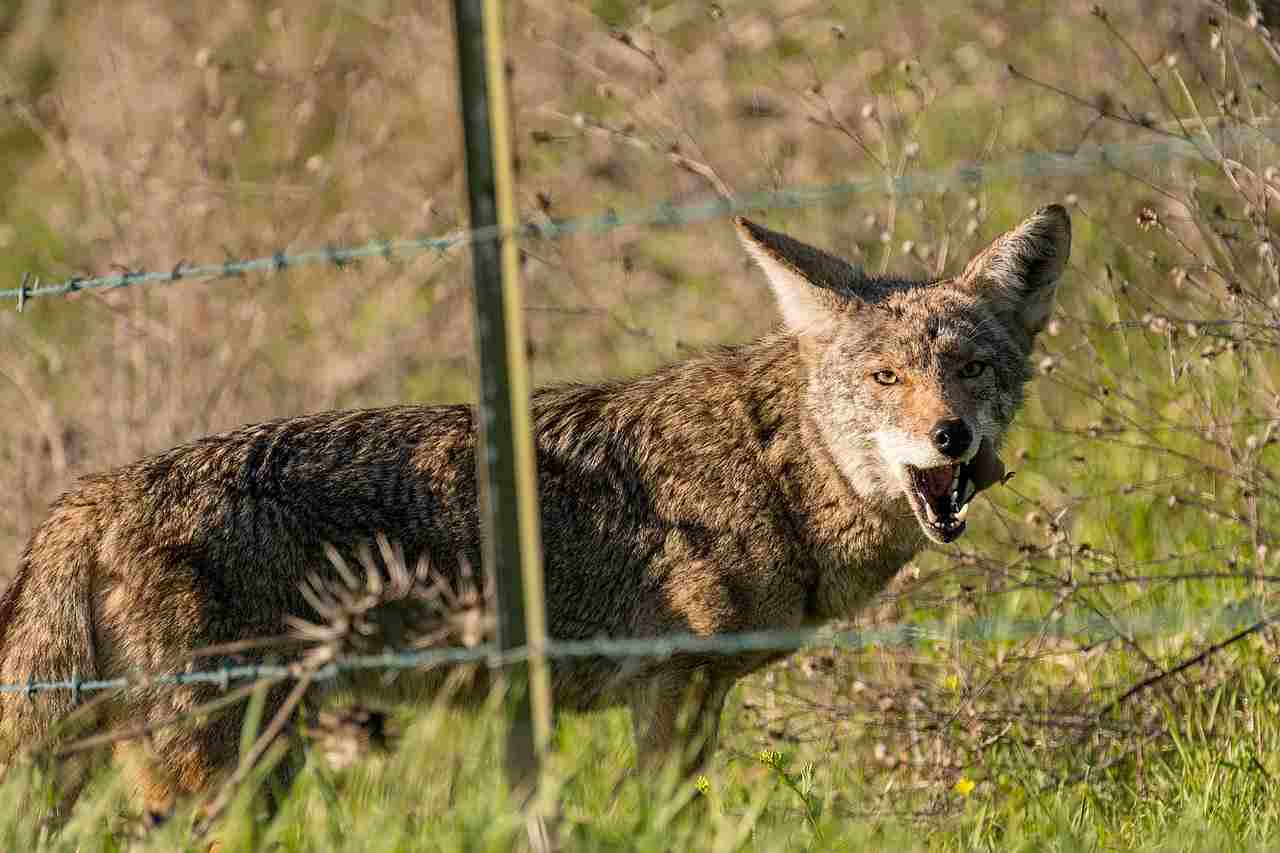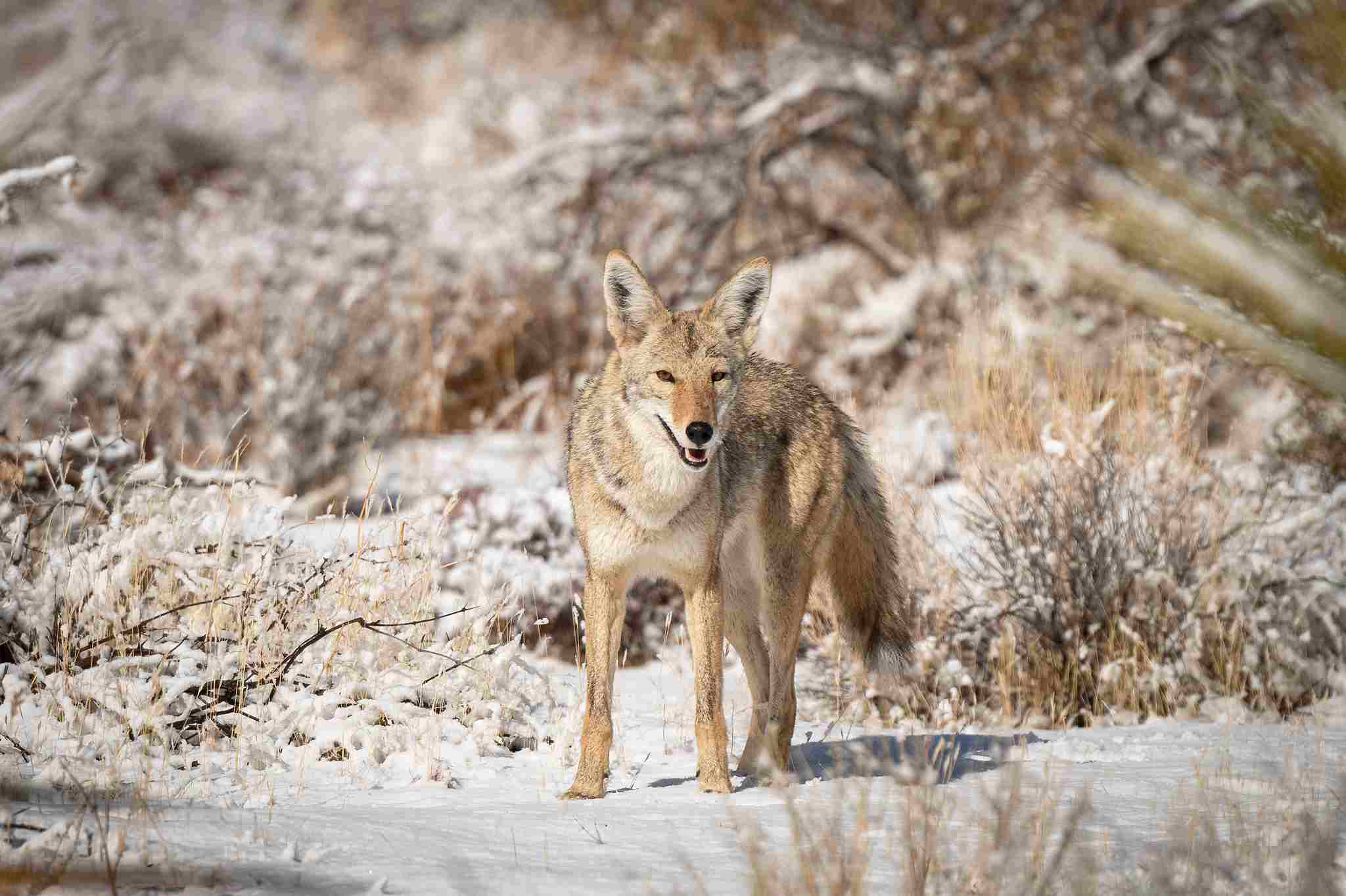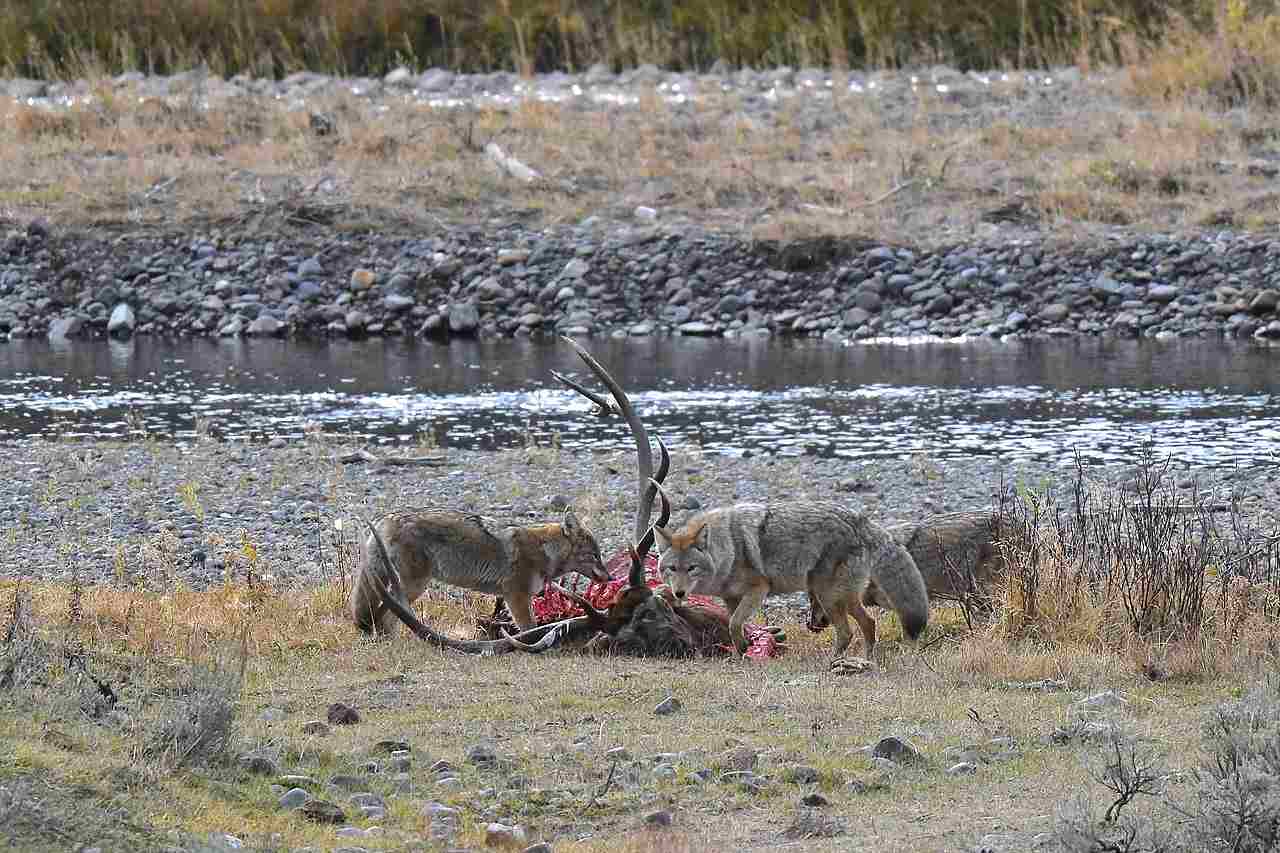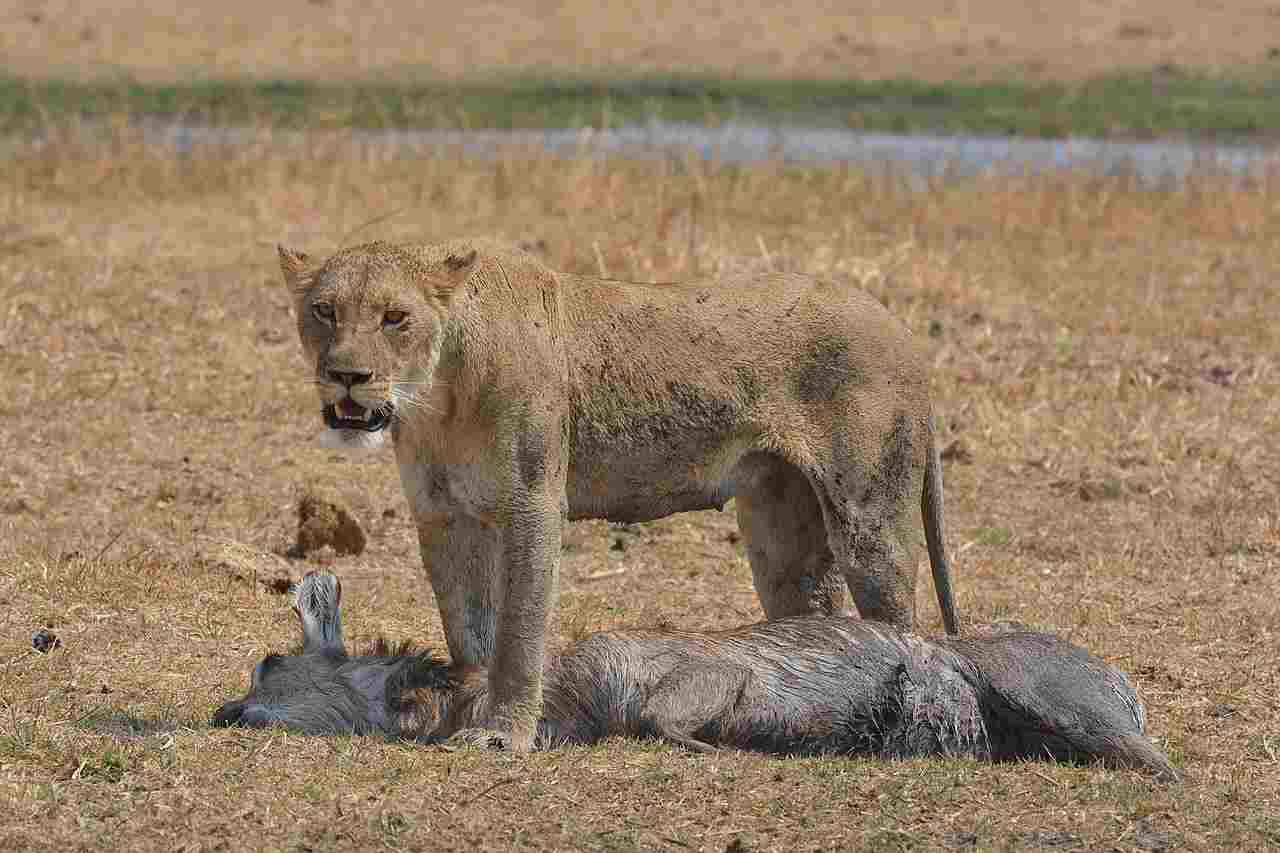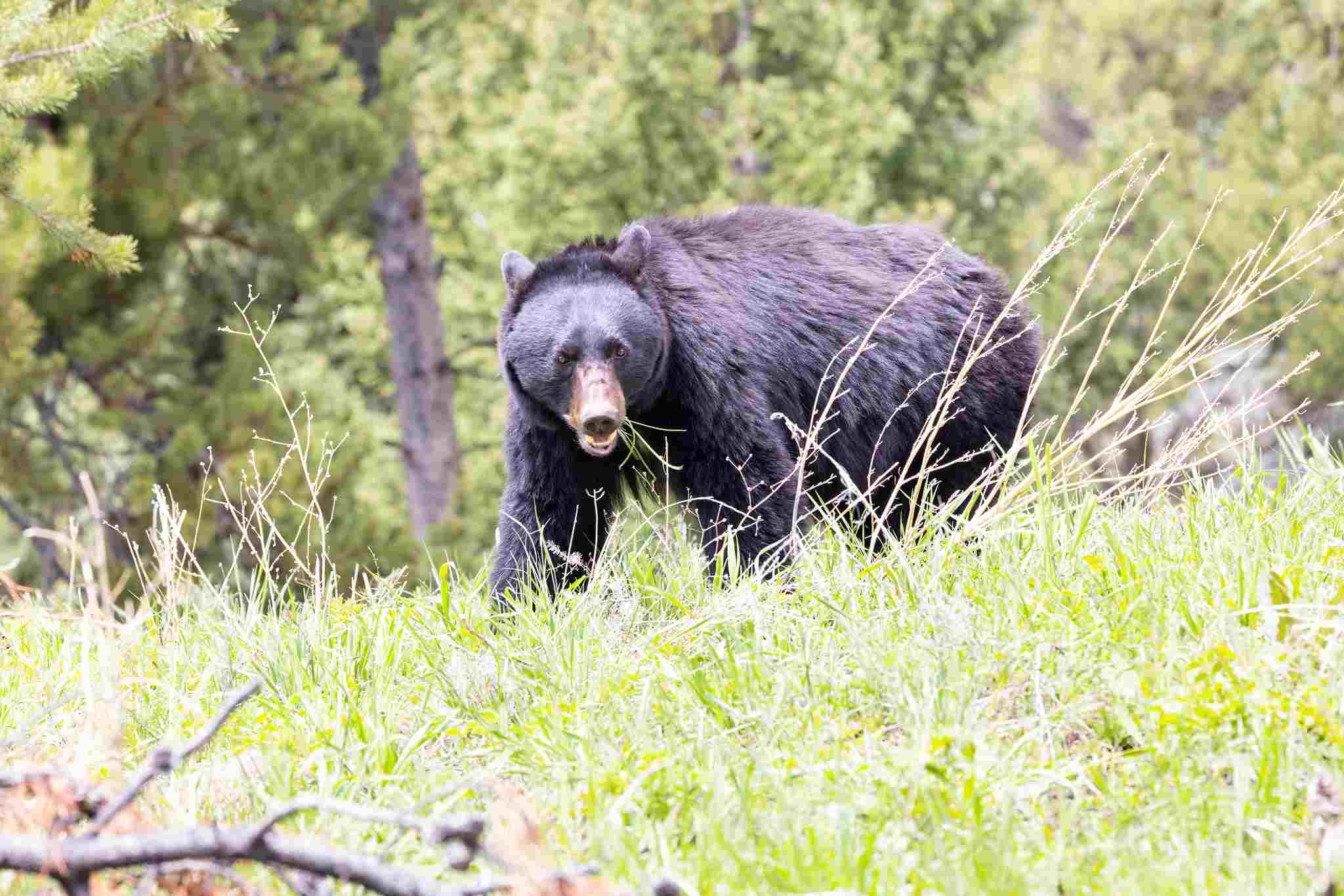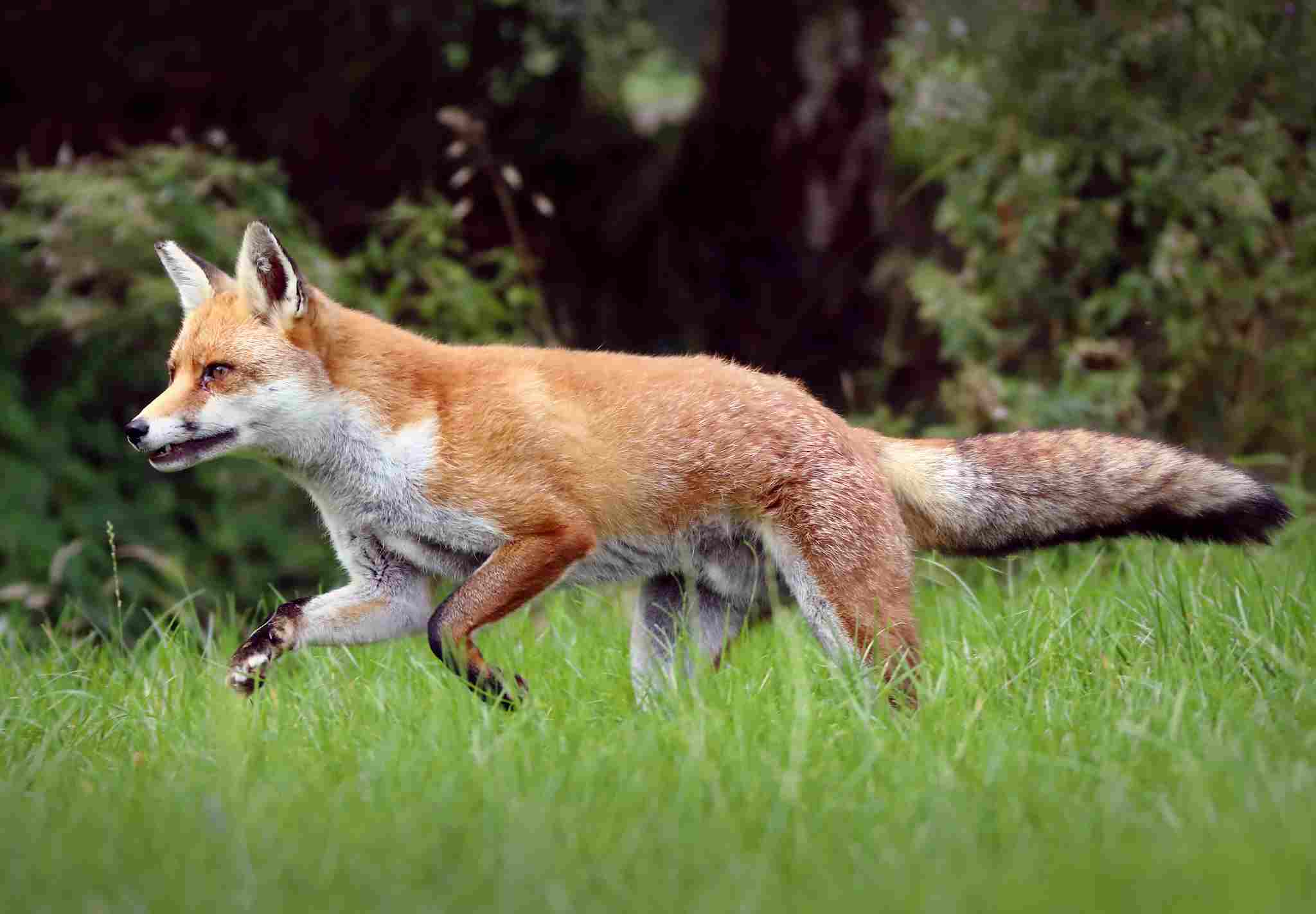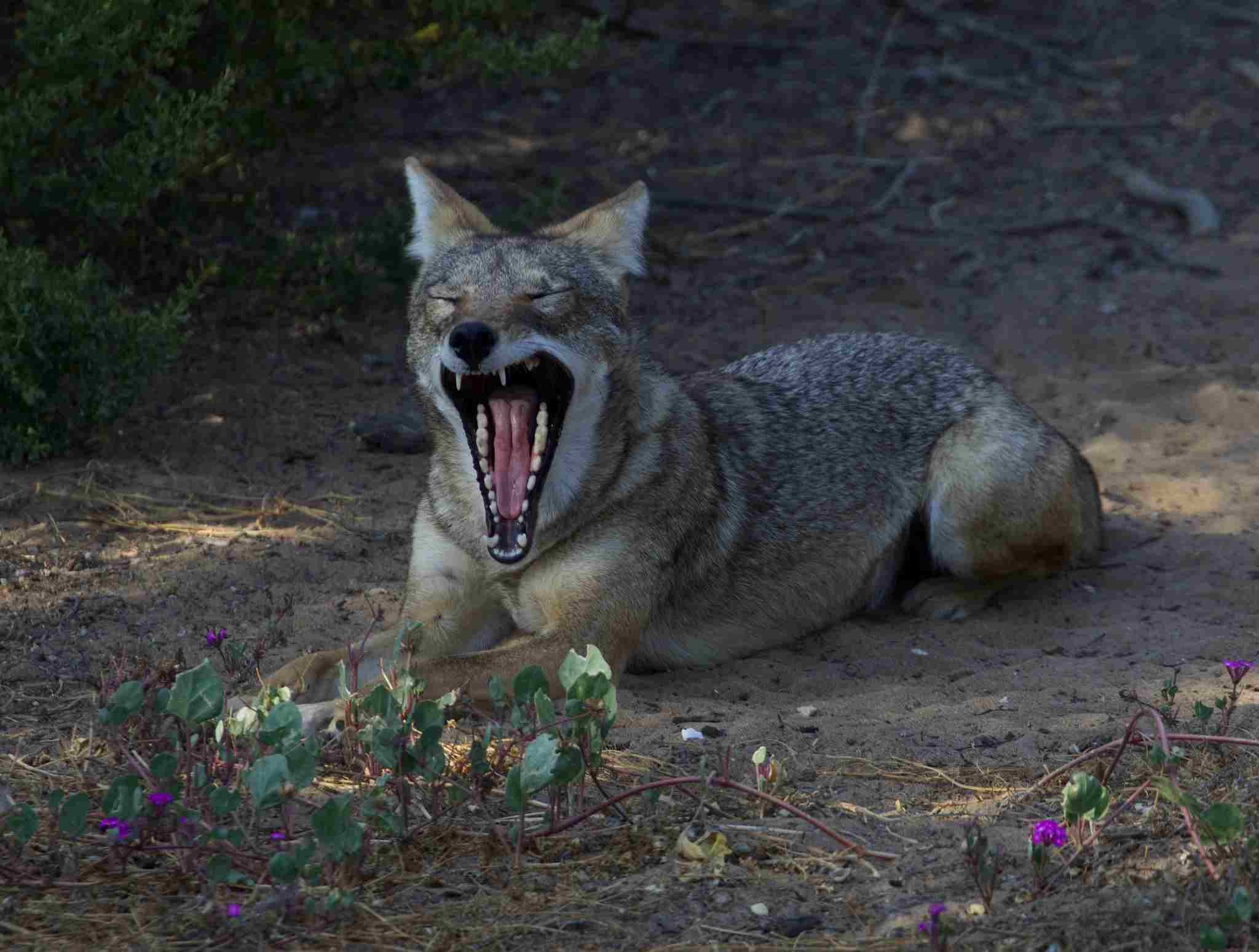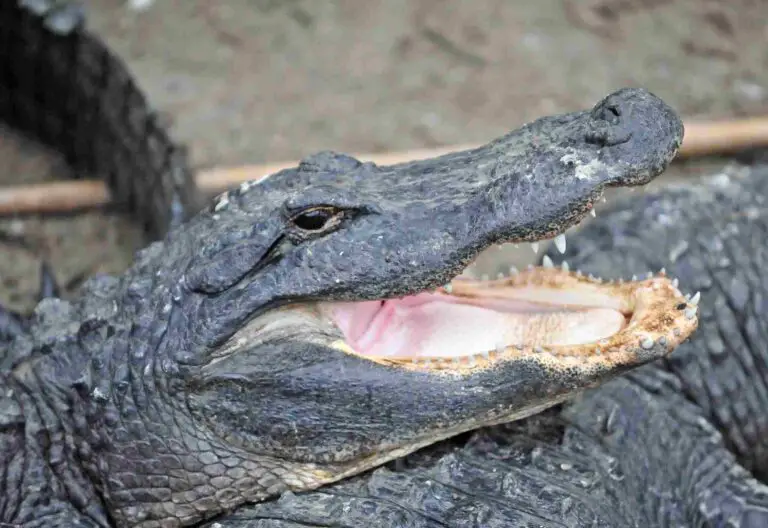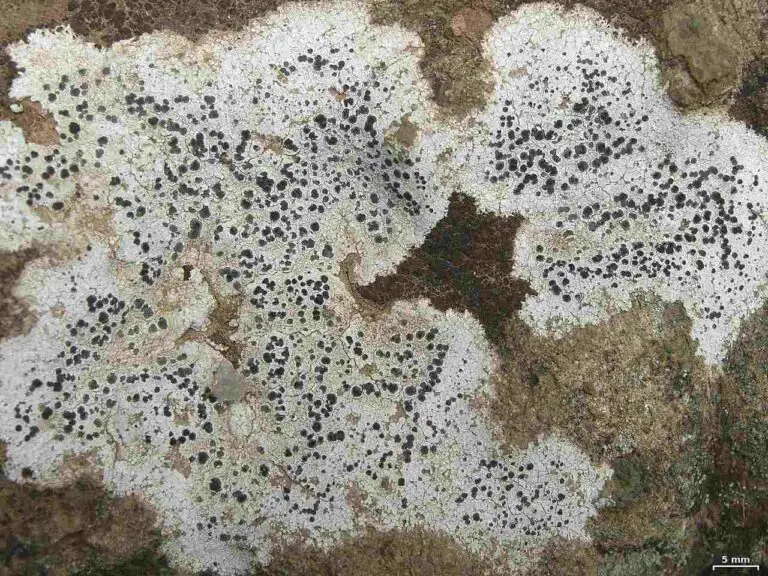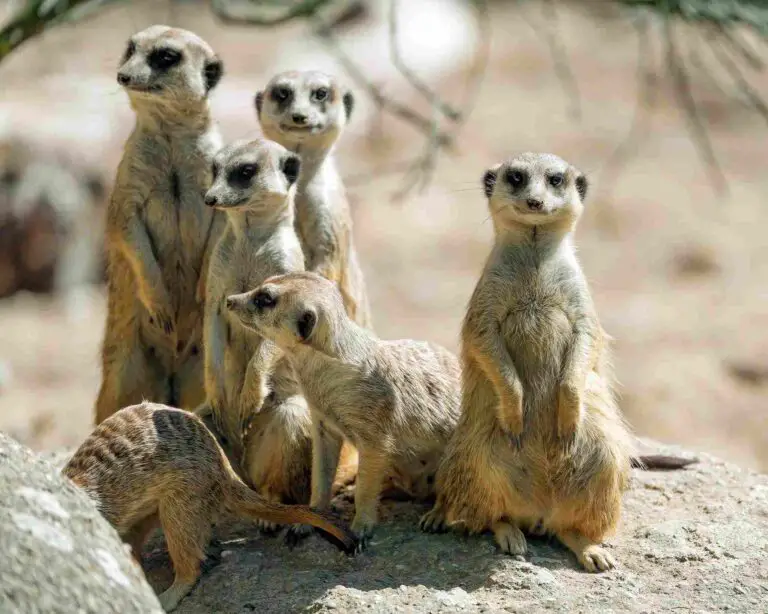13+ Predators In Wyoming And Their Characteristics
Examples of predators in Wyoming are rattlesnakes, grizzly bears, and grey wolves, each contributing to the state’s ecological balance. Rattlesnakes control rodent populations, grizzly bears are large omnivores found in mountainous regions, and grey wolves regulate ungulate populations. Other predators include mountain lions, red foxes, and coyotes, all playing unique roles in Wyoming’s diverse ecosystems.
1. Rattlesnake
Rattlesnakes are among the most iconic predators in Wyoming’s diverse ecosystem. Recognized by their distinctive rattle at the end of their tails, these venomous snakes play a crucial role in controlling rodent populations. The Western rattlesnake, which includes the prairie and Great Basin rattlesnakes, is common in Wyoming’s open grasslands, deserts, and rocky outcrops. Their rattle serves as a warning to potential threats, a unique adaptation that helps reduce unnecessary confrontations. Rattlesnakes rely on heat-sensing pits to locate warm-blooded prey, typically feeding on small mammals, birds, and reptiles.
Despite their fearsome reputation, rattlesnakes are generally shy and prefer to avoid humans. When encountered, they will often retreat if given the opportunity. In Wyoming, these snakes are most active from spring through early fall when the temperatures are warmer. While their venom can be dangerous, rattlesnakes are an important part of the ecosystem, contributing to the balance of prey species. Conservation efforts in Wyoming focus on maintaining their habitats and educating the public on safe practices to coexist with these fascinating predators.
2. Grizzly Bear
Grizzly bears are powerful predators and one of Wyoming’s most iconic species. These massive animals, known for their brown fur and distinctive hump, can be found in the mountainous regions of Wyoming, particularly in Yellowstone National Park and the surrounding areas. Grizzly bears are omnivorous, with a diet that includes a variety of foods such as roots, berries, insects, fish, and small mammals. During the late summer and fall, they focus on gaining weight to prepare for hibernation. Grizzly bears play a crucial role in maintaining the ecological balance by controlling populations of smaller predators and dispersing seeds through their scat.
While grizzly bears are often associated with danger, they generally avoid humans unless provoked or surprised. However, because of their size and strength, encounters with grizzlies can be hazardous. Conservation efforts in Wyoming aim to protect these majestic animals while minimizing human-bear conflicts. Education programs help people understand how to coexist with grizzlies, emphasizing safety in bear country and the importance of preserving bear habitats.
3. Grey Wolf
Grey wolves have a storied history in Wyoming, as they once roamed the state in large numbers before being driven to near extinction in the early 20th century. However, reintroduction efforts in the late 20th century successfully brought the grey wolf back to Yellowstone National Park, and their population has since spread to other parts of the state. Grey wolves are highly social animals, living in packs with complex social structures. They are apex predators, primarily preying on ungulates like elk and deer, but they will also hunt smaller mammals when necessary.
The return of the grey wolf has had a significant impact on Wyoming’s ecosystems, promoting a healthier balance among wildlife populations. However, wolves remain a controversial species due to their impact on livestock and the concerns of local ranchers. Management strategies aim to find a balance between wolf conservation and the interests of the agricultural community. Public education and research are key components of these strategies, as they seek to ensure a sustainable future for both wolves and the people who share their territory.
4. Mountain Lion
Mountain lions, also known as cougars or pumas, are stealthy and elusive predators found throughout Wyoming’s rugged landscapes. These big cats are solitary animals, using their keen senses and remarkable agility to stalk and ambush their prey, which primarily includes deer and other ungulates. Mountain lions are highly adaptable and can thrive in a variety of habitats, from mountainous forests to high desert regions. As apex predators, they play a critical role in regulating prey populations, contributing to the overall health of the ecosystem.
Although mountain lions are generally reclusive and avoid human contact, they can pose a threat when their habitats overlap with populated areas. Sightings and encounters with these big cats are rare but not unheard of in Wyoming’s rural communities. To address this, wildlife management focuses on monitoring mountain lion populations and educating the public on how to stay safe in cougar country. Proper habitat management and responsible outdoor practices help ensure that these powerful predators can continue to roam Wyoming’s wilderness without undue conflict with humans.
5. Red Fox
Red foxes are one of Wyoming’s most adaptable and widespread predators. These small canids are easily recognized by their reddish fur, bushy tails, and pointed ears. Red foxes are highly versatile in their diet, feeding on small mammals, birds, insects, and fruits. This adaptability allows them to thrive in various habitats, from forests and grasslands to suburban areas. In Wyoming, red foxes are commonly found in open fields and along forest edges, where they use their keen sense of hearing and agility to hunt for food.
Despite their presence in more populated areas, red foxes generally avoid humans, preferring to stay hidden and active during the night. Their adaptability makes them a valuable component of Wyoming’s ecosystem, as they help control rodent populations and disperse seeds through their diet. However, red foxes can sometimes cause issues when they prey on poultry or small pets, leading to conflicts with local residents. Wildlife management strategies focus on mitigating these conflicts through public education and encouraging cohabitation with these clever and resourceful predators.
6. Skunk
Skunks are small, nocturnal predators found throughout Wyoming, recognized by their distinctive black-and-white stripes and the pungent odor they release when threatened. There are several species of skunks in the state, with the striped skunk being the most common. Skunks are omnivores, feeding on insects, small rodents, eggs, and even plant material. Their ability to thrive in a variety of habitats, from forests and grasslands to suburban areas, speaks to their adaptability. Skunks play an important role in controlling insect and rodent populations, contributing to the ecological balance.
Despite their beneficial role, skunks are often associated with the strong odor they emit when defending themselves from predators or perceived threats. This defense mechanism can lead to unwanted encounters with pets and humans, resulting in occasional conflicts. In Wyoming, wildlife management strategies focus on educating the public about skunk behavior and how to avoid potential issues. Proper waste management and ensuring secure housing for pets and poultry can help reduce skunk-related conflicts while allowing these unique predators to coexist with humans.
7. Raccoon
Raccoons are highly adaptable predators commonly found throughout Wyoming, easily recognizable by their distinctive black “mask” markings and ringed tails. These nocturnal creatures are omnivorous, with a diet that includes fruits, nuts, insects, small animals, and even human food waste. This diverse diet allows raccoons to thrive in various habitats, from forests and wetlands to urban areas. In Wyoming, raccoons are often found near water sources, where they use their dexterous paws to catch aquatic prey and forage for food.
Raccoons’ adaptability and curiosity can sometimes lead to conflicts with humans, as they are known to raid garbage cans, invade attics, and cause mischief in suburban settings. Wildlife management in Wyoming aims to address these issues by promoting proper waste management and educating residents on securing their homes against raccoons. Despite these conflicts, raccoons play an important role in the ecosystem by helping control pest populations and dispersing seeds. Understanding their behavior and taking preventive measures can lead to peaceful coexistence with these clever and resourceful predators.
8. Coyote
Coyotes are versatile and resilient predators found throughout Wyoming’s diverse landscapes. They are smaller than wolves but share similar traits, including a varied diet and adaptability to different environments. Coyotes are opportunistic feeders, preying on small mammals, birds, and insects, and occasionally scavenging carrion. They are often found in open areas like grasslands, deserts, and agricultural fields, as well as in suburban and urban regions. Coyotes are known for their distinct vocalizations, which include howls, barks, and yips, used to communicate within their packs and establish territories.
While coyotes play an important role in controlling rodent and rabbit populations, they can also cause conflicts with humans when they prey on livestock or pets. Wildlife management in Wyoming focuses on addressing these conflicts while recognizing the ecological benefits of coyotes. Strategies include public education, non-lethal deterrents, and proper livestock protection measures. By promoting coexistence and understanding coyote behavior, Wyoming aims to maintain a balance between the needs of its human and wildlife populations.
9. Feral Cat
Feral cats are a unique type of predator found in Wyoming, resulting from domestic cats returning to the wild and establishing populations. These cats are typically more elusive and wary of humans compared to their domesticated counterparts. Feral cats are skilled hunters, preying on birds, rodents, and other small animals. While they can thrive in a variety of habitats, they are often found in areas with ample shelter, such as abandoned buildings, forests, and rural landscapes. In Wyoming, feral cats are a source of controversy due to their impact on local wildlife and their role in spreading diseases.
The presence of feral cats in Wyoming poses challenges for wildlife conservation and public health. Their hunting behavior can negatively impact native bird populations and other small fauna, leading to ecological imbalances. Additionally, feral cats can be carriers of diseases that can spread to domesticated pets and even humans. To address these issues, wildlife management strategies include Trap-Neuter-Return (TNR) programs and public education on responsible pet ownership. By managing feral cat populations and encouraging responsible practices, Wyoming seeks to reduce the negative impacts of these predators while ensuring a humane approach to their control.
10. Hognose Snake
Hognose snakes are unique predators found in Wyoming, known for their upturned snouts and distinct defense mechanisms. These snakes use their specialized snouts to dig through sandy soils in search of toads and other amphibians, which form a significant part of their diet. Hognose snakes are non-venomous and generally harmless to humans, but they have a dramatic defense strategy that involves hissing, flattening their necks, and even playing dead when threatened. This behavior can be alarming to those who encounter them, but it is usually a bluff to deter predators.
In Wyoming, hognose snakes can be found in a variety of habitats, including grasslands, sandy areas, and forested regions. Despite their intimidating defense tactics, these snakes are beneficial to the ecosystem, helping control amphibian populations. Wildlife management focuses on educating the public about the harmless nature of hognose snakes and encouraging their conservation. Understanding their unique behaviors and ecological roles helps reduce unnecessary fears and promotes coexistence with these fascinating reptiles.
11. Smooth Green Snake
Smooth green snakes are small, slender predators that inhabit Wyoming’s grasslands and open meadows. As their name suggests, these snakes have smooth, bright green scales that help them blend into their grassy surroundings, providing excellent camouflage from both prey and predators. Smooth green snakes primarily feed on insects, including grasshoppers, crickets, and caterpillars, making them beneficial for controlling pest populations in their habitats. These non-venomous snakes are generally shy and pose little threat to humans, preferring to flee or remain hidden when approached.
In Wyoming, smooth green snakes contribute to the ecosystem by helping maintain a balance in insect populations, which in turn supports a healthy environment for other wildlife. Their reliance on specific habitats makes them sensitive to changes in land use and environmental degradation, highlighting the importance of conservation efforts. Wildlife management in Wyoming aims to preserve suitable habitats for smooth green snakes and educate the public on the ecological benefits they provide. By understanding and protecting these gentle predators, Wyoming can continue to enjoy the beauty and ecological contributions of smooth green snakes.
12. Northern Goshawk
The northern goshawk is a formidable bird of prey found in Wyoming’s forests and mountainous regions. Known for their agility and strength, these hawks are apex predators that primarily hunt other birds and small mammals. The northern goshawk has a distinctive plumage with a grey back, white underparts with fine barring, and striking red eyes. They are highly territorial and are known to defend their nesting areas aggressively. In Wyoming, goshawks are often associated with mature forests, where they use their agility to navigate through dense trees while hunting.
The presence of northern goshawks in Wyoming is an indicator of healthy forest ecosystems, as they require large, undisturbed areas for nesting and hunting. Conservation efforts focus on preserving these habitats and ensuring that forest management practices do not negatively impact goshawk populations. Public education about the importance of these birds of prey in maintaining ecological balance is crucial, as is understanding the need for large tracts of forest for their survival. By protecting the northern goshawk’s habitat, Wyoming contributes to the preservation of this magnificent predator and the ecosystems it supports.
13. Red-Tailed Hawk
Red-tailed hawks are among the most common and recognizable birds of prey in Wyoming. These large hawks are known for their broad wings and characteristic red tails, which are particularly visible when they are in flight. Red-tailed hawks are adaptable and can be found in a variety of habitats, including open fields, deserts, and forests. They primarily hunt small mammals like mice, voles, and rabbits, using their keen eyesight to spot prey from high vantage points. The red-tailed hawk’s ability to thrive in diverse environments makes it a crucial component of Wyoming’s ecosystems, helping to control rodent populations.
Red-tailed hawks are also a common sight along highways and roads, where they use utility poles and other structures to perch and scan for prey. Although generally not aggressive towards humans, these hawks can become defensive if their nests are disturbed. Wildlife management in Wyoming focuses on preserving suitable habitats and minimizing human disturbances around nesting sites. Educational programs help people understand the role of red-tailed hawks in the ecosystem and encourage coexistence with these magnificent birds of prey.
14. Ferruginous Hawk
Ferruginous hawks are the largest hawks in North America and are found in the open landscapes of Wyoming. Named for their rust-colored plumage, these majestic birds of prey are known for their impressive size and broad wings. Ferruginous hawks primarily hunt small mammals such as prairie dogs, rabbits, and ground squirrels, making them valuable predators in grassland and desert ecosystems. Their nesting sites are typically on elevated structures like cliffs, trees, or artificial platforms, where they can keep watch over their hunting grounds.
In Wyoming, ferruginous hawks are often associated with the state’s expansive prairies and high deserts. Conservation efforts focus on protecting their habitats and ensuring sustainable populations of their prey species. Ferruginous hawks can be sensitive to disturbances during the nesting season, and wildlife management strategies aim to minimize human impact in their breeding areas. By understanding the unique needs of these magnificent hawks and promoting conservation efforts, Wyoming can continue to enjoy the benefits of these powerful predators in maintaining ecological balance.
*Summary of Wyoming Predators
-
Rattlesnake
-
Venomous snakes with a distinctive rattle.
-
Found in open grasslands, deserts, and rocky outcrops.
-
Contribute to controlling rodent populations.
-
-
Grizzly Bear
-
Large omnivorous bears with brown fur and distinctive hump.
-
Found in mountainous regions like Yellowstone.
-
Role in maintaining ecological balance.
-
-
Grey Wolf
-
Social predators living in packs.
-
Reintroduced in Yellowstone, now spreading across the state.
-
Impact on regulating ungulate populations.
-
-
Mountain Lion
-
Solitary big cats known for stalking prey.
-
Found in Wyoming’s rugged landscapes.
-
Role in regulating deer populations.
-
-
Red Fox
-
Small canids with reddish fur and bushy tails.
-
Adaptable, found in various habitats, including suburban areas.
-
Help control rodent populations.
-
-
Skunk
-
Nocturnal predators known for their pungent odor.
-
Omnivores feeding on insects and small rodents.
-
Play an important role in controlling insect and rodent populations.
-
-
Raccoon
-
Nocturnal predators with distinctive black “mask” markings.
-
Highly adaptable, feeding on a variety of foods.
-
Can sometimes cause conflicts with humans.
-
-
Coyote
-
Versatile predators with a varied diet.
-
Found in open areas, suburban regions, and agricultural fields.
-
Important for controlling rodent and rabbit populations.
-
-
Feral Cat
-
Domesticated cats that have returned to the wild.
-
Skilled hunters, often causing ecological imbalance.
-
Impact on local bird populations and small fauna.
-
-
Hognose Snake
-
Non-venomous snakes known for their upturned snouts.
-
Feed primarily on toads and other amphibians.
-
Use dramatic defense mechanisms to deter threats.
-
-
Smooth Green Snake
-
Small, bright green snakes with smooth scales.
-
Feed primarily on insects, contributing to pest control.
-
Sensitive to habitat changes.
-
-
Northern Goshawk
-
Large, agile birds of prey found in forested regions.
-
Hunt other birds and small mammals.
-
Indicator of healthy forest ecosystems.
-
-
Red-Tailed Hawk
-
Large hawks with characteristic red tails.
-
Found in various habitats, including open fields and deserts.
-
Play a crucial role in controlling rodent populations.
-
-
Ferruginous Hawk
-
The largest hawks in North America.
-
Found in open landscapes, primarily grasslands and high deserts.
-
Primarily hunt small mammals like prairie dogs and rabbits.
-
| Predator | Characteristics |
| Rattlesnake |
Venomous snakes, distinctive rattle, found in open grasslands and rocky outcrops.
|
| Grizzly Bear |
Large omnivorous bears, found in mountainous regions like Yellowstone.
|
| Grey Wolf |
Social predators living in packs, reintroduced in Yellowstone.
|
| Mountain Lion |
Solitary big cats, found in rugged landscapes, regulate deer populations.
|
| Red Fox |
Small canids with reddish fur, adaptable to various habitats.
|
| Skunk |
Nocturnal predators, known for their pungent odor, omnivorous.
|
| Raccoon |
Nocturnal, adaptable, distinctive black “mask” markings, cause conflicts.
|
| Coyote |
Versatile predators, found in open areas and suburban regions.
|
| Feral Cat |
Domesticated cats returned to the wild, impact on local bird populations.
|
| Hognose Snake |
Non-venomous, known for dramatic defense mechanisms, feed on toads.
|
| Smooth Green Snake |
Small, bright green, feeds on insects, sensitive to habitat changes.
|
| Northern Goshawk |
Large birds of prey, hunt other birds and small mammals.
|
| Red-Tailed Hawk |
Large hawks with red tails, found in various habitats.
|
| Ferruginous Hawk |
Largest hawks in North America, found in open landscapes.
|
